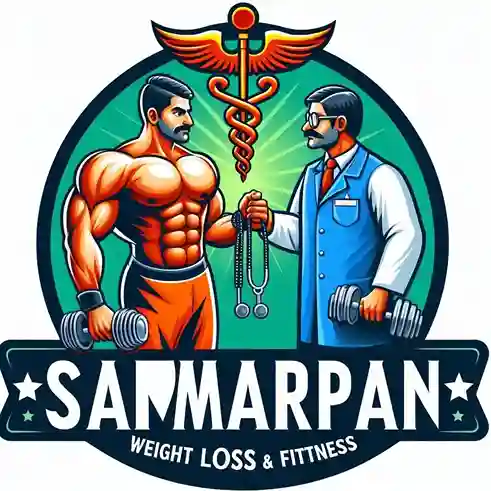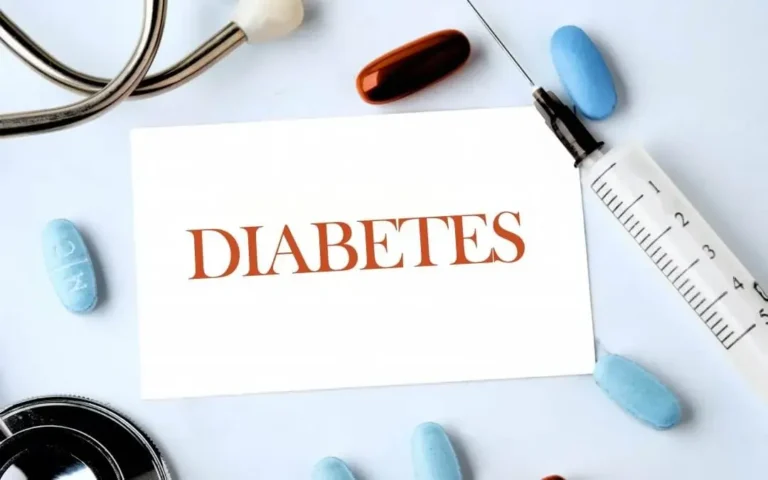Soluble Fiber
Carbohydrates contain a type of substance called fiber that the body cannot digest. Soluble and insoluble fiber are the two forms of fiber that we obtain from our meals.
While food generally tends to be greater in one type or the other, most carbohydrate sources that are high in fiber have both types.
What advantages does soluble fiber offer? Because soluble fiber absorbs water into it, it forms a gel-like substance in the digestive tract that slows down digestion and keeps you feeling full and “regular” in between meals. It also supports healthy metabolism and the heart.
Eating soluble fiber, which is present in high-fiber foods including fruits, vegetables, whole grains, and legumes, can help lower blood glucose and cholesterol levels and provide some protection against diseases like diabetes, metabolic syndrome, and weight gain.
Fiber: What Is It?
One kind of carbohydrate that your body is unable to digest is fiber. Although fiber has many health advantages, we frequently associate it with foods that help with constipation. While soluble and insoluble fiber are the two primary categories of dietary fiber, numerous varieties of this nutrient fall under each of those categories.
Soluble fiber: What is it?
Soluble fiber is defined as a viscous, fermentable fiber that absorbs water. Because it doesn’t dissolve in water and stays intact throughout the digestive process, insoluble fiber differs from soluble fiber.
When you add water to a food, you may determine whether it has more soluble fiber than insoluble fiber. It has a significant amount of soluble fiber if which appears to absorb water and gel, as is the case with food like oatmeal or flaxseeds.
Soluble and insoluble fiber: what are they?
Your body converts food into useful nutrients when you consume it. However, fiber cannot be absorbed or digested by it, which is advantageous. However, fiber travels through your body without significant damage.
In body fluids such as water, soluble fiber dissolves. When it does, a gel-like substance is created as it moves through. It supports the beneficial bacteria in your colon once it gets there. Numerous health advantages, including protection against obesity and its associated diseases like diabetes, are associated with good gut bacteria.
Fluids cannot dissolve insoluble fiber. However, it forms stool by absorbing them and sticking to other components. Softer, thicker, and more consistent stools are the result of this process.
Health Benefits of Fiber
You need both types of fiber for good health. The advantages of fiber include:
- Digestion: Fiber improves the passage of stool. Better colorectal health results from regularity.
- Heart health: Fiber may help prevent and manage high blood pressure by lowering cholesterol.
- Cancer: Dietary fiber consumption has been associated in certain studies with a decreased risk of breast and colorectal cancer.
- Diabetes: By promoting improved blood sugar control, fiber lowers the chance of developing diabetes.
- Lifespan: A high-fiber diet has been linked by some researchers to a longer lifespan.
- Weight management: Fiber increases feelings of fullness.
Benefits of Soluble Fiber
The majority of the health advantages are:
Improves cardiovascular health
What benefits does soluble fiber provide for heart health? A diet rich in soluble fiber may help reduce your risk of heart disease and excessive cholesterol, according to studies.
Because soluble fiber attaches to cholesterol particles and helps them leave the body, research indicates that it lowers both total and LDL cholesterol levels. Additionally, it may hinder the intestines’ ability to reabsorb bile acids, which are heavy in cholesterol and produced by the gallbladder to help in fat digestion.
While soluble fiber comes in a variety of forms, research indicates that its beneficial effects on cholesterol are largely the same. The Mediterranean diet, which consists of nutritious foods including vegetables, legumes, whole grains, and nuts, is an example of a high-fiber diet that has been connected to cardiovascular advantages.
Improves digestion and supports intestinal health
Both kinds of fiber are important for supporting gut health, reducing constipation by making stool more powerful, clearing the digestive tract, and providing nutrition to good “probiotic” bacteria.
Does the digestion of soluble fiber occur? It is believed that soluble fibers are prebiotics. This indicates that the colon’s microorganisms break them down.
In the human stomach, soluble fiber is fermented by good bacteria that play a variety of roles in supporting health and help nourish these bacteria. Although some people may experience abdominal pain and gas as a result of this fermentation process, it is generally a very healthy one.
For diarrhea, which type of fiber is best? It is advised to concentrate on increasing your intake of soluble fiber if you have problems with loose stools.
Because insoluble fiber helps to speed up the passage of food through the intestines, it can cause diarrhea. Increasing the amount of insoluble fiber in your diet, on the other hand, is a natural strategy to help reverse constipation.
Helps with weight control and metabolic health
Diets rich in fiber have been shown to protect against metabolic syndrome, which is characterized by high blood pressure, high blood sugar, low healthy HDL cholesterol, high triglycerides, belly fat, and even obesity.
Because it absorbs water in the stomach and intestines, soluble fiber, which is present in carbohydrate diets, supports the process of stomach emptying. This helps release sugar into the blood more slowly and makes you feel fuller for longer.
Foods high in soluble fiber may help you control your appetite, cut down on cravings and between-meal snacking, and lose weight, especially belly fat, because they can increase feelings of fullness.
Helps keep blood sugar levels stable.
According to studies, soluble fiber has advantages for metabolic health, including lowering blood glucose (sugar) levels and triglycerides, and cholesterol. Consuming a fiber-rich diet can help prevent obesity, lower inflammation, and increase insulin sensitivity—all of which are associated with risk for type 2 diabetes.
20 Soluble Fiber-Rich Foods
Carrots
There are several health advantages to eating colorful fruits and vegetables that are rich in phytonutrients, which are plant-based substances. Carrots include a type of phytonutrient called carotenoids, which are beneficial to the eyes. Carotenoids are also used by your body to produce vitamin A.
A balanced combination of soluble and insoluble fiber can be found in carrots. There are approximately 1.1 grams of soluble fiber in one medium carrot.
Carrots are easy to digest when cooked as compared to when eaten raw. The amount of fiber in these root vegetables doesn’t significantly change by cooking.
Green Beans
A cheap and simple approach to incorporate soluble fiber into food is by using green beans. They are an excellent source of potassium, vitamin C, and antioxidants that help protect cells from damage over time.
Green beans can be eaten raw, but roasting, steaming, or stir-frying them makes them simpler to digest. There is about one gram of soluble fiber in one cup of cooked green beans.
Brussels Sprouts
A great source of both soluble and insoluble fiber is Brussels sprouts. You can get all the vitamin C you need in a single dish.
A lot of individuals stay away from Brussels sprouts because they think they may make them uncomfortable. However, some IBS sufferers can manage very small servings and still benefit from this high-fiber vegetable. Brussels sprouts are simpler to digest when cooked.
The soluble fiber content of one cup of cooked Brussels sprouts is about 2 grams. Slightly more is present in raw Brussels sprouts, as those used in chopped salads.
Chickpeas
Garbanzo beans, another name for chickpeas, are high in fiber and protein. They are also a strong source of folate and vitamin B6, which a cup of them provides about 14% of your daily requirement.
You may cook chickpeas in olive oil, add them to soups and sauces, or sprinkle them over salads. Over 4 grams of soluble fiber can be found in one cup of cooked chickpeas.
Lentils
Lentils, like chickpeas, are a high-nutrient and high-fiber legume. A cup of cooked lentils provides at least 20% of your daily potassium needs and a significant amount of your daily protein and dietary fiber needs.
More than five grams of soluble fiber can be found in one cup of cooked lentils. The beans will be less gaseous if they are rinsed and soaked before cooking.
Potatoes
In addition, potatoes are a great source of magnesium, potassium, vitamin B16, vitamin C, and protein. Both soluble and insoluble fiber are high in them. These include purple, yellow, and red-skinned potatoes in addition to baking potatoes.
2.4 grams of soluble fiber and almost the same amount of insoluble fiber are found in one medium potato. Cut away the skin to cut down on insoluble fiber.
Sweet Potatoes
Another excellent approach to satisfying your sweet appetite while enjoying the advantages of soluble fiber and nutrients like potassium and vitamin B6 is by eating sweet potatoes.
Sweet potatoes, in place of potatoes, contain mannitol, a kind of sugar that adds sweetness without raising blood sugar levels noticeably. Because of this, sweet potatoes are safe for diabetics.
The soluble fiber content of one medium sweet potato is around 2.7 grams.
Summer Squash and Zucchini
Both zucchini and summer squash are high in potassium, vitamin B6, and vitamin C. They also include zeaxanthin, a strong antioxidant that helps fight free radicals that damage cells, and lutein, a carotenoid that protects the eyes.
A cup of cooked zucchini or summer squash has 2.4 grams of soluble fiber.
Eggplant
In addition to being low in calories, eggplant is a wonderful source of potassium, manganese, and folate. With just 0.8 grams of protein per cup serving, it is also a fantastic option for those following a low-protein diet.
About 2.5 grams of soluble fiber and 2.5 grams of insoluble fiber per cup are found in cooked eggplants. Peeling the skin can help reduce some of the insoluble fiber. When eggplant is cooked in olive oil, it becomes tasty and simpler to digest.
Okra
Along with a variety of other nutrients, including calcium, potassium, vitamin B6, and vitamin C, okra is a fantastic source of soluble fiber. Like Brussels sprouts and green beans, too much okra might give you gas.
Fructans, a fermentable sugar found in large amounts in okra, are prebiotic—that is, they produce probiotic bacteria during digestion.
About 2 grams of soluble fiber are found in one cup of cooked okra.
Avocados
Protein, vitamins, soluble fiber, and good fats are all high in avocados. Just one avocado provides at least 13 grams of heart-healthy monounsaturated fat and 2.5 grams of heart-healthy polyunsaturated fat.
Since cooking removes lycopene, a potent antioxidant, avocados are best consumed raw.
One-third of the daily necessary amount of fiber can be found in one cup of avocado. But most of it is insoluble. Three grams of soluble fiber can be found in one cup of avocado.
Blueberries
One of the best fruit-based sources of fiber is blueberries. The antioxidants known as anthocyanins, which give blueberries their blue color, and fructans are also high in them.
Because of their high fiber content, blueberries don’t dramatically increase blood sugar levels, even if they can fulfill a sweet tooth. There are roughly 0.4 grams of soluble fiber in one cup of fresh blueberries.
Although they can be refrigerated and still have nutritional value, blueberries are best consumed fresh.
Bananas
Among its many wonderful attributes are its year-round availability, portability, and high vitamin and fiber content. About 33% of the potassium you should consume each day can be found in one banana.
Four grams of soluble fiber and almost half as much insoluble fiber are found in one cup of bananas, or around two medium-sized bananas.
Kiwi
Vitamins C, K, E, folate, and potassium are all high in kiwis. A medium-sized kiwi fruit provides about half of the daily required amount of vitamin C.
In addition to having high levels of the three main carotenoids (lutein, beta carotene, and zeaxanthin), kiwis’ high fiber content can help control blood sugar levels.
There are at least 6 grams of soluble and 6 grams of insoluble fiber in one cup of fresh kiwi, which is equivalent to about four medium-sized berries.
Oranges
Oranges are among the top sources of vitamin C overall and a great source of fiber. Additionally, they are a good source of calcium, potassium, and folate. Half or more of your daily required consumption of vitamin C can be obtained from only one medium-sized orange.
About 1.8 grams of soluble fiber can be found in one small orange.
Juice, especially strained juices that remove the pulp, is considerably less valuable than whole fruit.
Raspberries
Vitamin C and soluble fiber are high in raspberries. They have a higher fructan content than blueberries, whether they are fresh or frozen.
Roughly 25% to 33% of your daily required fiber intake can be found in one cup of raspberries. Raspberries have a little higher quantity of insoluble fiber (4.6 grams) per cup than blueberries, but roughly the same amount of soluble fiber (1.8 grams).
Strawberries
Only minor amounts of fat and protein are present in strawberries, which are primarily composed of water (91%) and carbohydrates (8%). Fiber accounts for about 26 percent of the total carbohydrates.
The 1.8 grams of soluble and 2.6 grams of insoluble fiber in one cup of fresh strawberries is comparable to that of raspberries.
Vitamin C, manganese, folate, and potassium can all be found in strawberries. Strawberries are more nutritious when they are fresh than when they are cooked.
Oatmeal
Oats are regarded as a heart-healthy food and a great source of fiber. Manganese, potassium, magnesium, and zinc can all be found in good amounts in oats.
Avenanthramides, which are antioxidants found in oats, may also lower blood pressure.
Oats can be consumed raw; however, cooking them makes them easier to digest. About 3 grams of soluble fiber are found in one cup of cooked oats.
Peanuts
It’s tasty, portable, and full of nutrients like folate. They also have a good balance of soluble and insoluble fiber and are rich in prebiotic fructans.
Additionally, peanuts include a lot of good monounsaturated and polyunsaturated fat (24 and 16 grams per 100 grams, respectively).
There are about 0.6 grams of soluble fiber in 20 big peanuts. Likewise, one tablespoon of peanut butter has about 8 grams of protein and 0.3 grams of fiber.
Sunflower Seeds
Additionally, sunflower seeds are a fantastic portable snack. They are rich in iron, magnesium, fiber, protein, and vitamin B6. Sunflower seeds are particularly rich in manganese and selenium, providing at least 30% of the daily necessary amount per 1/4 cup portion, and vitamin E, providing more than the daily recommended amount per serving.
Over 4 grams of soluble fiber can be found in one cup of sunflower seeds.
You can add sunflower seeds to salads, mashed potatoes, and cooked veggies in addition to snacks.
What is the required amount of fiber?
Monitoring your consumption of soluble vs insoluble fiber is not necessary; instead, concentrate on the total quantity of fiber you consume each day. The suggested amounts are as follows:
- For men under 50: 38 grams.
- Men over 50: 30 grams.
- Women under 50: 25 grams.
- Females over 50: 21 grams.
To keep an eye on how much fiber you’re eating, check nutrition labels. Additionally, start small and work your way up if you’re among the many Americans who don’t get enough. Constipation and gas pain can result from consuming too much fiber too fast.
A fantastic way to start is by eating a diet full of whole foods, such as fruits, vegetables, and legumes. Additionally, food is always going to be the finest source of fiber, even though you might occasionally benefit from a supplement.
Risks of Consuming Too Much Fiber
According to some research, consuming excessive amounts of fiber can lead to:
Diarrhea and intestinal blockage, abdominal pain, excessive gas, and flatulence (farting)
If these symptoms are common for you, consult a healthcare provider. They might indicate a health condition like irritable bowel syndrome (IBS) that needs medical attention.
Limiting insoluble fibers may help if you have inflammatory bowel disease (IBD), such as Crohn’s disease or ulcerative colitis, and your symptoms worsen. These could cause symptoms and be difficult to digest.
When symptoms subside, it’s important to progressively start consuming fiber. Fiber may help maintain the recovery of IBD symptoms, according to some studies.
It’s important to gradually increase your servings of fiber if you wish to improve your intake. Drinking adequate water each day is also essential if you want to enjoy the full benefits of eating fiber.
FAQs
How much soluble fiber do you consume?
Daily fiber intake is inadequate for the majority of Americans, and daily recommendations differ mostly by age and gender. The finest sources of soluble fiber include beans, oatmeal, sweet potatoes, and lentils; supplements like Sunfiber can also be a dependable way to increase soluble fiber intake.
Does soluble fiber have an advantage over insoluble fiber?
Fiber, whether soluble or insoluble, has advantages of its own. While insoluble fiber helps soften stool and make it easier to pass, soluble fiber may help in better digestion and blood sugar control.
Why is soluble fiber important, and what is it?
Water flows into your intestines through soluble fiber, softening stools and promoting regular bowel motions. In addition to reducing constipation and making you feel fuller, it may also lower blood sugar and cholesterol levels.
Are soluble fibers considered prebiotics?
Soluble fiber either turns into a gel-like material or dissolves in water. The gut microbiota is supplied with food and supported by some prebiotics, which are broken down by beneficial gut bacteria in the large intestine. Soluble fiber supports blood glucose and cholesterol levels, as well as helps in a healthy digestive system.
Reference
- Clinic, C. (2024a, August 12). What’s the difference between soluble and insoluble fiber? Cleveland Clinic. https://health.clevelandclinic.org/whats-the-difference-between-soluble-and-insoluble-fiber
- Norris, T. (2024, December 7). What’s the difference between soluble and insoluble fiber? Healthline. https://www.healthline.com/health/soluble-vs-insoluble-fiber#risks
- Bolen, B., PhD. (2025, March 12). 20 foods high in soluble fiber for improved gut health. Verywell Health. https://www.verywellhealth.com/best-ibs-friendly-sources-of-soluble-fiber-1945020
- WebMD Editorial Contributor. (2023, February 1). Types of fiber: soluble and insoluble fiber. WebMD. https://www.webmd.com/diet/compare-dietary-fibers






3 Comments